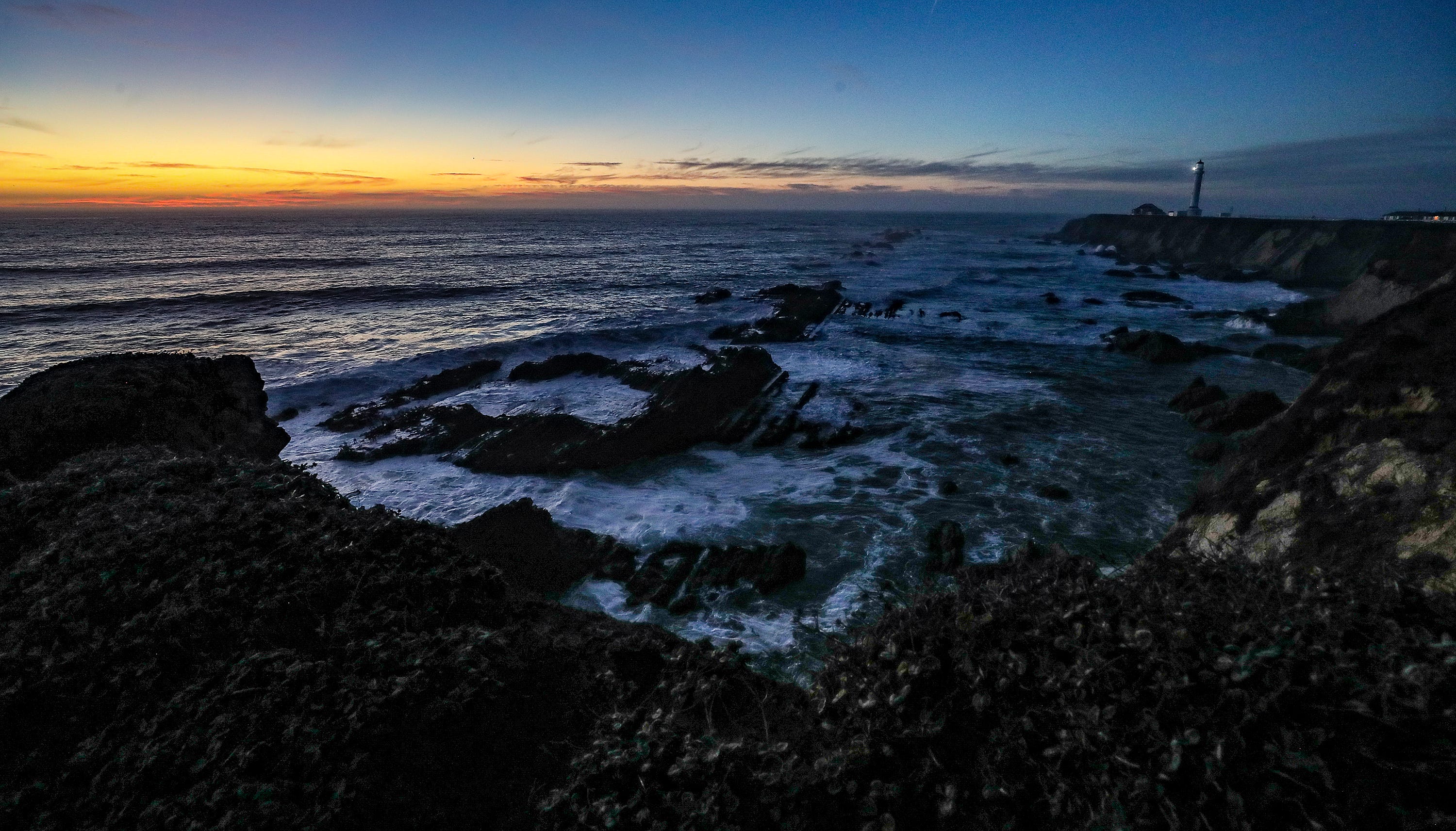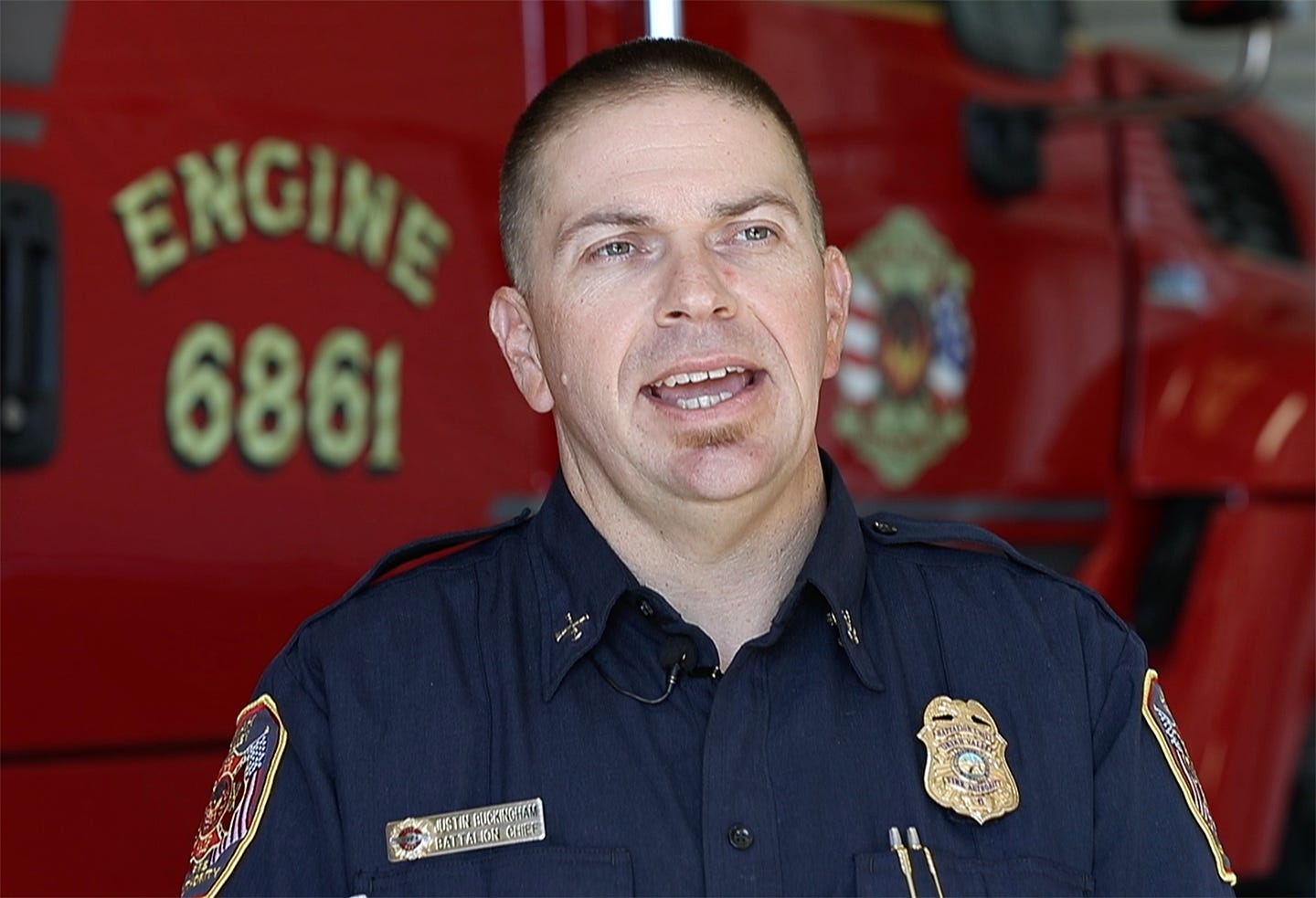Merrifield, who is in recovery and works with youths at the Round Valley Indian Health Center, said he believes marijuana should only be used medicinally, such as for relief of pain from cancer. He said he smoked marijuana years ago and it was his gateway to other drugs.
“It’s being abused” on the reservation, he said while standing in front of the center, within view of a marijuana grow across the street. “I’ve voiced that many times in (tribal council) meetings.”
The councilman said he also is concerned about shootings and disappearances.
“This ain’t Mexico City, but it’s happening here,” he said. “It is alarming our elders, 80-years-old and up, who don’t feel safe here.”
Customers across the U.S. who buy marijuana on the internet likely don’t realize the labor and sex trafficking they could be financially supporting, police said.
“Some of the marijuana being moved across the country is born on the back of slave labor,” said Sena, who also heads up the Northern California Regional Intelligence Center. “Often the people brought in to do labor are mistreated” on illegal marijuana farms.
In Mendocino County, someone dropped off a frightened 16-year-old girl from Mexico who didn’t know where she was and didn’t speak English at an illegal cannabis farm in Covelo months ago. The sheriff fears she was brought in to have sex with the workers, but his deputies found her first.
Other farm workers, including young men used for sex and labor trafficking, weren’t rescued in time. Some were forced to live in squalor without plumbing. Others ended up dead and many are missing, the sheriff said.
“We have families who will never be able to know what happened to their children,” Kendall said. “I’m not going to put up with it.”


Armed illegal growers are also setting up operations on federal land in national forests.
Investigators have found “trespass grows” in 72 national forests in 21 states, that includes all of California’s 18 national forests, said Mourad Gabriel, a regional wildlife ecologist for the U.S. Forest Service who is based in the Emerald Triangle.
An average of more than 2 million cannabis plants were eradicated on federal land from 2007-2019 — more than a million of which was grown in California, Gabriel said.
He’s concerned about the unknown impact of dangerous chemicals, including ones used to kill rodents that are banned in the U.S. and have been used at some grow sites, including in the Mendocino National Forest.
“They’re definitely smuggled in from Mexico,” he said.

Courtesy of Mourad Gabriel
Gabriel worries about soil contamination and tainted streams which supply the Round Valley Indian Reservation in Covelo.
“They definitely are at risk if contamination is to occur,” he said.
The scientist said in 2014 someone poisoned his beloved rescue dog Nyxo, who suffered an agonizing death. Gabriel believes it was a scare tactic to stop his research.
Gabriel helped connect illegal grows to the poisoning or shooting of spotted owls, fishers, bear, deer and hawks.
Growers at illegal sites sometimes cut down trees and also leave piles of trash and human waste near streams in the forests.
“They’re toxic waste sites,” said California Assemblyman Jim Wood, a Democrat whose district includes the Emerald Triangle.
“They’re damaging the water and damaging wildlife, and it’s at a pretty large scale.”
In fiscal year 2019, more than 353,000 marijuana plants were eradicated from national forests in California and across the country, and officials confiscated $948 million dollars worth of marijuana, said U.S. Forest Service spokeswoman Jamie Hinrichs.
In recent years, officials found large grows on national forests in California, Alabama, Arkansas, Arizona, Colorado, Georgia, Idaho, Indiana, Kentucky, Michigan, Montana, North Carolina, New Mexico, Nevada, Oregon, Tennessee, Texas, Utah, Virginia, Washington and Wisconsin.

Burns and explosions are another threat with illegal cannabis.
A 56-year-old man illegally making a form of pure THC in September caused an explosion in Mendocino County that killed him and burned his two grandchildren.
Firefighters and three air ambulances rushed to the overnight trailer park in the town of Ukiah, the county seat.
“I found three burn victims running around trying to find water” screaming and crying, said Justin Buckingham, a battalion chief with the Ukiah Valley Fire Authority.

Investigators say the man was making butane honey oil, a golden liquid extracted from the cannabis stem, seeds and leaves using the same highly flammable gas found in grill lighters.
The finished product, syrupy like honey, can contain nearly pure THC. A kilo of the wax, formed when the extract solidifies, has a street value of up to $39,000, Sena said.
Drug users can heat, vaporize and inhale the wax, a trend called “dabbing,” which has sent patients to emergency rooms with symptoms similar to pneumonia, according to case studies, including one published in July in the National Library of Medicine.
Doctors caution the long-term health effects aren’t known.
Most of these labs are illegal, police said. There are several steps to get a permit, including having a ventilation system, avoiding heat sources and recycling the wastes.
The Ukiah explosion, which blew out the windows, caused 2nd- and 3rd-degree burns to a 12-year-old boy’s arms and legs, said Lt. Andy Phillips, with the Ukiah Police Department.
An 8-year-old girl suffered 1st- and 2nd-degree burns.
The grandfather died several days later.
There have been several similar explosions over the past few years, but none were fatal, the lieutenant said.

Veteran lawmen, including Sena and the Mendocino County sheriff, now favor allowing marijuana federally as a way to cripple the illegal market.
Results of a new Gallup poll released in November show 68 percent of Americans support legalizing marijuana federally, a record high.
However, repeated attempts by U.S. lawmakers to legalize it have failed. In November, Republican Rep. Nancy Mace of South Carolina introduced a bill to federally decriminalize marijuana, allowing states to regulate the drug similarly to alcohol.
In California, lawmakers announced in September $1.5 million to target the biggest illegal growers in Mendocino, Trinity and Humboldt counties. The Emerald Counties previously got $1.5 million to help clean up the toxic wastes left behind on illegal grow sites, Wood said.
Kendall said federal prosecution of criminal drug networks in his area are rare, and he needs more help from agents.
DEA San Francisco officials declined to comment, but the FBI released a statement saying its officials collaborate with the Mendocino County Sheriff’s Office “on ongoing investigations and share intelligence on criminal threats.”
Sena agreed Mendocino County needs more resources, but said undercover work is difficult because area growers recognize cars and faces that are new to the remote area.
He also said the focus is more on the immediate threat of fentanyl, America’s No. 1 killer.
“Until this gets elevated to the point where people can actually make the connection between the violence that we’re seeing on the streets of America and the illicit flow of marijuana, we’re not going to be able to get the funding, the personnel, the right resources.”
Reporter Beth Warren: bwarren@courier-journal.com; 502-582-7164; Twitter @BethWarrenCJ.
Published
Updated


Be the first to comment